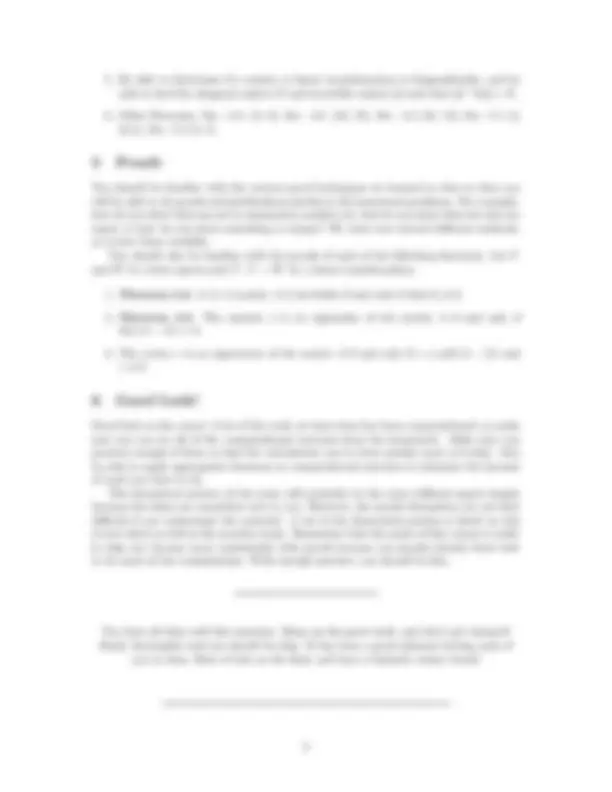



Study with the several resources on Docsity

Earn points by helping other students or get them with a premium plan


Prepare for your exams
Study with the several resources on Docsity

Earn points to download
Earn points by helping other students or get them with a premium plan
Community
Ask the community for help and clear up your study doubts
Discover the best universities in your country according to Docsity users
Free resources
Download our free guides on studying techniques, anxiety management strategies, and thesis advice from Docsity tutors
A review for the final exam of the linear algebra course (math 333) in fall 2007. It covers the sections that will be examined, important definitions, theorems, and computational exercises. Students are advised to focus on understanding concepts and being able to apply them to computational problems and proofs.
Typology: Exams
1 / 3

This page cannot be seen from the preview
Don't miss anything!


The final exam will have two parts. The first part will be cumulative, covering material from the first two exams. The second part will cover the material we have learned since the last exam. For Part 1, you should go over the review sheets and practice exams for the first two exams. This time around it will be mostly computational, but you are expected to know all definitions and theorems mentioned on those review sheets. The proofs will be emphasized significantly less on this part of the final exam. Part 2 of the final exam will cover Sections 3.1-3.4, 4.1-4.4, and 5.1-5.2 of the textbook. You should read and understand all of these sections.
You should know ALL definitions covered in the above mentioned sections, not just those listed below. However, you should pay special attention to the definitions of each of the following terms. DEFINITELY KNOW (i.e. MEMORIZE) THESE DEFINITIONS.... Also, if asked to give a definition of something, you can NOT give a theorem. For example, “an eigenvalue λ of a matrix A is any root of the characteristic polynomial det(A−λI) = 0” is NOT the definition; it is a theorem.
For Sections 5.1 and 5.2, many definitions are given in the book in terms of linear transformations, but in class the definitions were given in terms of matrices. If you are asked for the definition of something involving matrices, then I want you to write a definition IN TERMS OF MATRICES, and there should be NO MENTION of a linear transformation (and vice versa). For example, for the definition of “Diagonalizable matrix”, you should NOT say,
“The square matrix A is diagonalizable if the linear transformation LA is diag- onalizable.”
Full credit will only be given for an answer such as
“The square matrix A is diagonalizable if A is similar to a diagonal matrix,” or “A ∈ Mn×n is diagonalizable if A = Q−^1 DQ for some diagonal matrix D.”
This warning applies to ALL of the definitions from Sections 5.1 and 5.2. If you have any doubts or concerns about a definition, please feel free to ask before and/or during the final exam.
3 Theorems
You should know the statements and understand the usefulness of all theorems in the above mentioned sections. Pay special attention to each of the following theorems. You will NOT be asked to write the precise statements of most of these theorems, so don’t attempt to memorize exactly what they say. Simply know how to use them. However, you may be asked to write the precise statement if it has a ** next to it.
4 Computations and other Exercises
You are responsible for knowing any homework exercise that has been assigned as well as similar computational exercises. However, you may choose to focus on the following types.